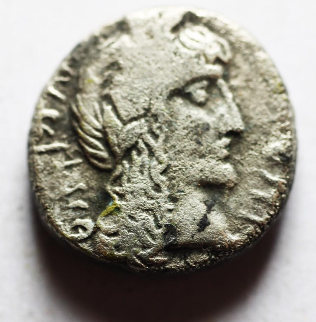AMMAN — The style of the Nabataean kings had been influenced by Graeco-Roman political and cultural models. Due to close political and economic relations with the Hellenistic world and later the Roman Empire, the architecture as well as insignias, portraits were local forms of the Hellenistic models.
The Nabataean dynasty preferred realism in expressing facial features, similar to Augustan portraits.
“These rulers have generally short hair, either in studied disarray or neatly combed forward,” noted assistant professor of Classical Art from the University of Nottingham, Andreas Kropp.
"Their main royal insignia, inherited from their Hellenistic predecessors, was the diadem, a plain white band of cloth tied around the head and knotted at the nape of the neck with two loose ends hanging from the knot," Kropp said, adding that by contrast Nabataean portraits show much less concern for lifelike reproduction of physiognomies and consistency in details.
Some Hellenistic elements, from neighbouring Ptolemaic Egypt, are evident stacked portraits of king and queen but throughout their ca. 140 years of coinage 4, in which almost all the silver coins are precisely dated by regnal years, royal portraits are idealised, de-individualised representations of the kings, with few personal features and much variation, the professor underlined, adding that the same king can look different from one issue to the next, with different facial features like the size of the eye or the shape of the nose.
"Most kings are shown with large eyes similar to Ptolemaic kings, large straight noses, small rounded chins and small pouting lips. Their hairstyles, which are likewise very varied, mark a clear departure from Hellenistic royal portraiture. Instead of neat short hair the kings sport either the characteristic long thick 'dread' locks [sometimes called Libyan locks] or, starting in the 1st century A.D., wavy strands which often cover the ears and the nape of the neck," Kropp highlighted.
The hair of the Nabataean kings reflects their Arabic and Semitic features depicting male figures with "a round-cut fringe and long braids falling on the neck".
"Some kings also wear a moustache, a feature entirely foreign to Graeco-Roman fashions, but common in the Arabian Peninsula, eastern parts of Syria and the countries further east," Kropp explained, noting that 80 per cent of the available Nabataena coins are from the reign of Aretas IV (9 BC-40 AD).
There are a few popular themes of the Nabataean coins: royal portrait, standing figure, hand, eagle, cornucopiae (large cone-shaped container, a symbol of abundance) and wreath.
Presentations of Aretas IV change by time, so from the short-haired ruler he transformed into a long-haired king.
"Unlike the 'dread' locks of his predecessor Obodas II [ ruled from 30 BC to 9 BC], Aretas developed a personal hairstyle of thin wavy strands falling in parallel to his shoulders. This change of iconography was accompanied by a change of insignia: Aretas swapped the diadem for the laurel wreath," Kropp underlined, adding that the first Nabataean monarchs who minted coins with their portraits (Aretas III, Malichus I) wear the attribute one would expect, the diadem with the well-known characteristics of Hellenistic royal diadems.
However, there is only one known exception to this rule, a recently published coin series of Malichus dated year 28 (33 BC) where the king is wearing two insignia, a laurel wreath piled up on top of a diadem. His successor Obodas II too generally wore a diadem, but on some of his later issues starts wearing the laurel wreath instead, the scholar said.
His successor Aretas IV in his first issues dated year 1 (9/8 BC) alternated between diadem and wreath, but from then on settled for the latter as the definitive royal insignia.
"Some observers suggest that diademed heads of Aretas continue down to year four, but there has been some confusion over the identification of the portraits. Judging by the hairstyle and facial features, all the diademed heads except the year one issues are post humous portraits of Obodas, not Aretas," Kropp underlined, adding that the laurel wreath remained the principal royal insignia until the end of the dynasty (106 AD).
